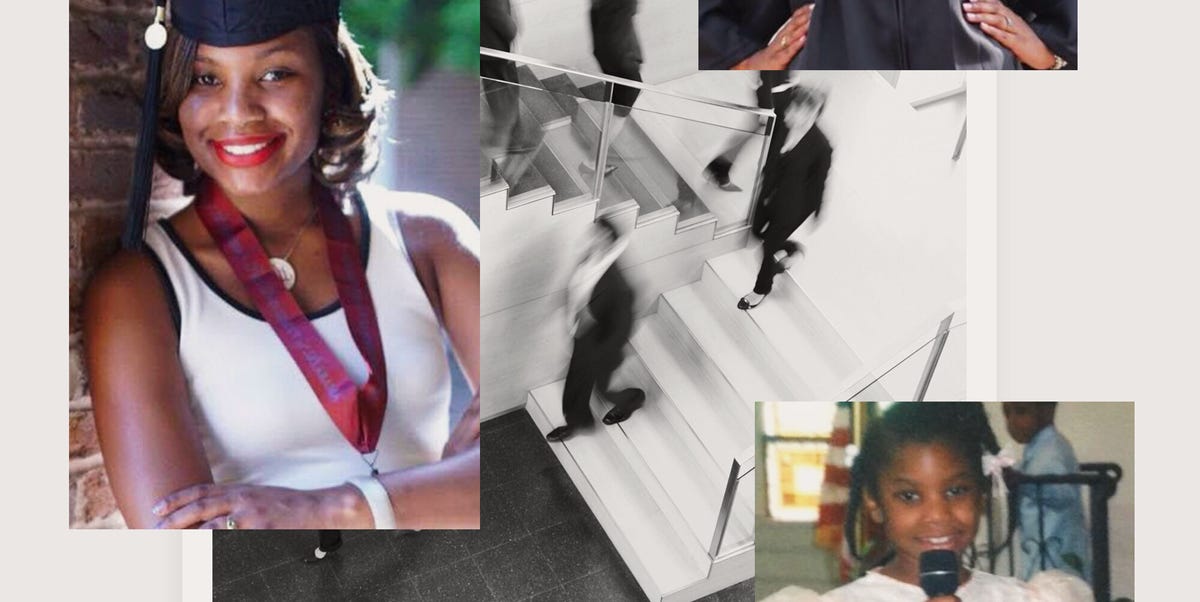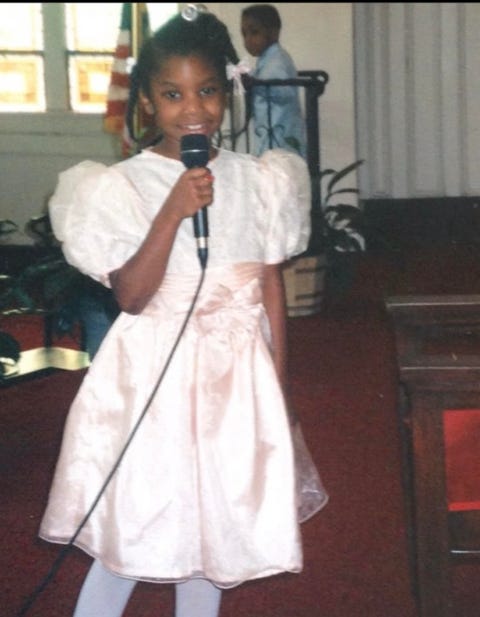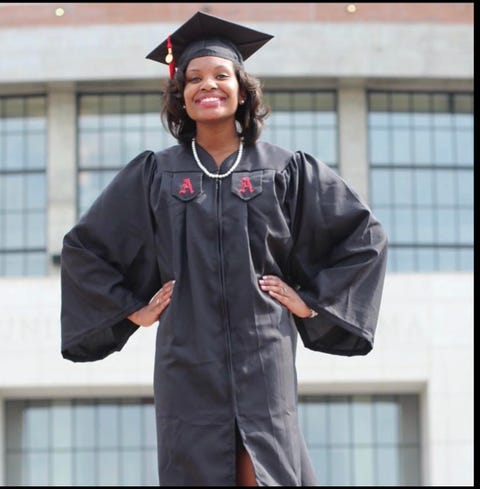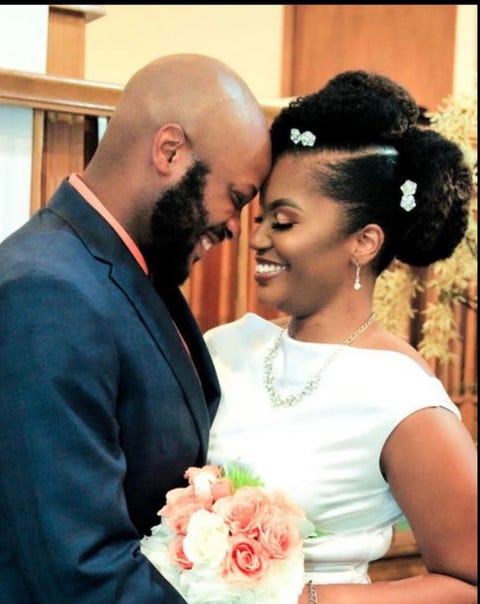Twenty-six years ago, Andrea Dobynes Wagner didn’t pass her preschool vision test. She was later diagnosed with retinitis pigmentosa, a group of genetic eye disorders that lead to peripheral vision loss and difficulty seeing at night. Growing up legally blind, doctors warned Andrea that she’d never lead a normal life. They recommended she work a clerical job after high school and live with her parents.
Andrea rejected that destiny. She learned to navigate the world with her limited vision and enjoyed a childhood full of academic achievement, sports, dating and friends. In college, she lived independently and by age 24 she bought a house. Today, at 31, Andrea holds multiple advanced degrees and lives with her husband in Tuscaloosa, Alabama.
Despite everything Andrea has overcome, one challenge persists: navigating the job market with an invisible disability. Even with laws prohibiting discrimination, people with disabilities face many obstacles to employment. In this piece, Andrea shines a light on the cracks in the system and why she’s devoting her career to advocating for those pushed to the margins.
In March 2019, I was giving a presentation for a job in tutoring services at a university in Alabama. What the five-person hiring committee saw: a petite Black woman dressed sharply in a crisp shift dress and tweed power blazer, standing at the front of the room. What I saw: mostly darkness.
Through my eyes’ narrow aperture—imagine peering down a skinny paper towel roll—I could make out the small conference room and the multi-racial panel of men and women smiling brightly at me. They did not know about my retinitis pigmentosa, a genetic disorder that gives me permanent tunnel vision.
As a Black woman with an invisible disability, I was used to this. I stand at a fraught intersection of identities often discounted by society. In some instances, I face outright employment discrimination. Other times, hiring practices unintentionally exclude me. Even with those earnestly recruiting people with disabilities—from social services to companies intent on hiring us—I’m often cut out of the process because I’m not disabled in a way that’s obvious or because my young age and advanced degrees disqualify me from public benefits. In the eyes of employers and public service providers, I’m disabled, but not disabled enough.
Even if it was more visible, the unemployment rate of disabled people generally with advanced degrees is almost twice the unemployment rate of non-disabled people with advanced degrees, according to the Bureau of Labor Statistics. Only 25 percent of disabled people with advanced degrees are employed, compared to 72 percent of people without disabilities with the same educational attainment.
That’s why even though the hiring committee said nice things about me to my face, when weeks passed and they never called, I wasn’t surprised. After the interview for that job, I reached out to one committee member, hoping for intel. She told me that I had aced my interview, but one panelist dinged me for my lack of eye contact—that was the deal breaker.
I was crushed by her remarks. I am legally blind; eye contact will never be my strong suit. For most of my life, I’ve viewed my disability as a superpower—it’s made me adaptive, innovative and empathetic. But on the job market it has complicated my path to success. Even with my advanced degrees and experience, I can only go so far in a system that fails to understand and accommodate people with disabilities. In the U.S., 61 million adults live with a disability, according to the Centers for Disease Control, and many of them show no outward sign of disability. They may have hearing or vision impairment, epilepsy, autism spectrum, chronic illness or mental health ailment, among other conditions. The majority of disability job discrimination claims filed with the U.S. Equal Employment Opportunity Commission (EEOC) between 2005 and 2010 were associated with invisible disabilities, according to research by Cornell University’s Employment and Disability Institute.
Technically, the EEOC protects us from job discrimination, but I’ve seen enough to know better. When I taught a high school journalism class, an administrator regularly commented on my disability, calling it my “crutch.” Whenever she observed my teaching style, she’d pull me aside and level critiques that always began with, “I know you have vision problems but…” She criticized me for not walking around the room while I lectured, for not catching every student who peeked at their cellphone, or for turning off the lights while screening a documentary, all circumstances that stemmed from my retinitis pigmentosa. Even after students voted me “Educator of the Year,” my boss continued to fixate on my disability. Eventually, her bullying became untenable, and I quit.
Ever since I couldn’t spot the Christmas tree in a routine preschool vision test, my family worked hard to ensure I wouldn’t be left behind. My parents drove me hundreds of miles across the Southeastern United States for appointments with eye doctors and retina specialists. My grandparents—all four of them retired educators—routinely showed up at our doorstep bearing stacks of books and learning games.
Born the same year as the Americans with Disabilities Act of 1990, I grew up navigating disability benefits with my family. After attending a free summer camp for the deaf and the blind, where other parents happily shared resources with my mom and dad, my world opened up. Soon our home filled up with free talking books, text-enlarging machines and other assistive technologies. I leaned into my love of learning, quickly outpacing my peers by two grade levels.
Doctors had practically damned me to a life of solitude, dependence and unemployment. But my childhood was full; in high school I ran track, did cheerleading, dated boys and enjoyed my close circle of friends. In college, I learned to live independently and by age 24, I had bought my own house in Tuscaloosa, Alabama, after just a few years of teaching.
Despite my success, disclosing my disability to employers remains dicey; it could cost me the job or invite harassment. Unless I’m positive disclosure will help, I typically wait for a job offer before divulging.
It doesn’t help that most applications have migrated online and require details such as a driver’s license number. I’m legally blind. I have no peripheral vision, let alone a driver’s license, so I’m booted from the process before it’s even begun. I’ve tried accessing ride services for people with disabilities, but I can’t qualify for these services without a job, and I can’t apply for these jobs without the ride service set up. When I applied to virtually teach English to kids in China, I couldn’t take the role because the script I’d need to read was in their software, which didn’t have text-enhancing capabilities. This international company was not bound by EEOC mandates to accommodate me.
Company programs that specifically recruit people with disabilities do so for lower-wage jobs with fewer benefits. I regularly see postings from big box stores hiring cashiers and store greeters. These jobs won’t help me climb out of graduate school debt or advance in my chosen field, advocating for diversity, equity and inclusion in education. Meanwhile, I no longer qualify for public programs that would help me through leaner times; my advanced degrees and previous higher earnings made me ineligible for social security, food assistance, and housing assistance.
These barriers have taken a toll on my career and economic security, but still, I know I’m one of the lucky ones. I grew up with a supportive family. Today, I’m surrounded by friends who love me, give me rides to doctor appointments and, when I shatter a dish, rush over to safely clean it up for me since I can’t see the shards. I’ve also been lucky in love. Like many modern relationships, my marriage sprouted from flirty DMs on Instagram. On our first date, Justin assumed I was just tipsy when I grabbed his arm and wobbled in my heels up the steps of a darkened jazz club. By our second date, I knew he was the real deal, so I told him about my retinitis pigmentosa, about the chance of passing it along to my children, about the possibility of losing what little sight I had left. My stomach was in knots as the words tumbled out, but he just looked at me tenderly and said, “Why would you think that’d change anything?”
There are always optimistic signs. Recently, over Zoom, I interviewed for a position as curriculum coordinator for a middle school social justice summer academy. When asked, “What does diversity, equity, and inclusion look like to you?” I took a deep breath and decided to take a risk.
“It looks like me,” I replied. “I’m black, female and legally blind. I cannot drive, but I do have drive to do this work.”
I saw the three panelists smile back at me from my screen. This time, I didn’t have to wait weeks for an answer. I was offered the job.
This piece was supported by the Economic Hardship Reporting Project.
This content is created and maintained by a third party, and imported onto this page to help users provide their email addresses. You may be able to find more information about this and similar content at piano.io




